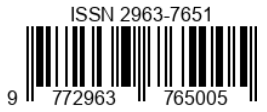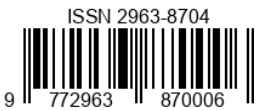Analisis Hukum Pemenuhan Hak Anak Untuk Memperoleh Diversi Terhadap Problematika Anak Residivis
DOI:
https://doi.org/10.55606/jhpis.v2i3.1659Keywords:
Children, criminal law, Diversion and Restorative JusticeAbstract
The purpose of this writing is to identify, study and analyze procedural diversion for children in conflict with the law in the Juvenile Criminal Justice System. In this paper the author uses the normative juridical method. In the conclusion of the discussion, children who are in conflict with the law are considered as legal subjects who are not competent and do not understand what they are doing. Investigation of child cases is carried out by investigators appointed by Decree of the Head of the Indonesian National Police or other officials appointed by the Head of the Indonesian National Police. If the Diversion succeeds in reaching an agreement, the Investigator will submit the Minutes of Diversion along with the Diversion Agreement to the head of the district court for stipulation. Meanwhile, if the Diversion process fails, the Investigator must continue the investigation and transfer the case to the Public Prosecutor by attaching the Minutes of Diversion and minutes of community research. Arrested children must be entrusted to the LPKS. The cost for each child placed in the LPKS is borne by the budget of the ministry that administers government affairs in the social sector. The role of diversion as an effort to protect the rights of children's rights is expected to solve the problems of children who are in conflict with the law. When a child is faced with a formal criminal justice process, it is certain that the child will lose his freedom. By diverting, the freedom of children is still guaranteed, and the deprivation of independence for them can be avoided. Diversion is a very meaningful effort to provide protection for children who are in conflict with the law so that they can fulfill the basic rights of children.
Downloads
References
Bouffard, Jeff., Cooper, Maisha., and Bergseth, Kathleen. (2016). The Effectiveness of Various Restorative Justice Interventions onRecidivism Outcomes Among Juvenile Offenders. Youth Violence and JuvenileJustice, Vol.15, (No.4), pp.465-480.
May, Jessica., Osmond, Kristina., & Billick, Stephen. (2014). Juvenile Delinquency Treatment and Prevention: A Literature Review. Psychiatric Quarterly, Vol. 85, (No.3), pp.295–301.
Soetodjo, Wagiati, 2006. Hukum Pidana Anak. Bandung : PT. Refika Aditama
Undang-undang:
Indonesia, Undang-Undang Nomor 35 tahun 2014 tentang Perubahan atas UU no 23 tahun 2002 tentang Perlindungan Anak (Penjelasan Umum UU 35/2014).
Indonesia, Undang-Undang Nomor 11 tahun 2012 Tentang Sistem Peradilan Pidana Anak.








